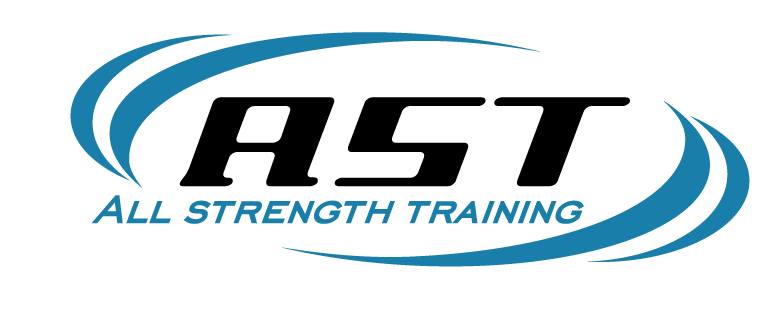10 Mass Building Tips for Hardgainers
#1. Get lean first.
It’s much easier to do the things you need to do to gain muscle when your bodyfat is low. For example, carbs are protein-sparing, meaning they serve the function of providing energy to the body so that protein can be directed toward muscle growth and repair. However, if your bodyfat percentage is high, you’re likely more insulin resistant, which means those additional carbs will be turned to bodyfat.
It’s not necessary to be stage-ready 365 days a year, but trying to maintain near single digits is a good idea.
#2. Use BCAA’s during your workout.
The first month I added 20-30 grams of BCAA’s during each training session, I gained 6lbs of lean mass. Clients that I’ve worked with rave about diminished recovery time and being able to get a few extra reps out of each workout.

Branched chain amino acids, made of leucine, isoleucine, and valine, are essential amino acids and have a preference toward being used for muscle growth, and have been shown to increase protein synthesis and raise insulin sensitivity. In clinical settings, they have also been used to treat severe burns as well as side effects from liver failure.
Males should use at least 20 grams per workout, and females should use at least 10. I recommend using capsules instead of powder as the taste of the powder tends to be awful, so some companies add artificial sweeteners or sugars to mask the taste.
#3. Keep a food journal.
While I’m not a fan of lifelong food tracking, food logs are good for one thing: perspective. It’s easy to think you’re eating a lot of food, but handing over your journal to somebody who’s skilled in nutrition for hypertrophy can expose a lot of holes in your habits. Pick 1 or 2 habits to fix at a time, and continue to log so that you can see (or not see) improvement. Once the changes become more or less permanent, then a journal may not be as necessary. Or, if you’re tech-savvy, take a picture of everything you eat and drink for a week and have a qualified coach review it with you.
#4. Keep a training log.
This goes with point #3, but I would consider it even more important. I’ve worked with some guys who claim to train extremely hard, but when asked about details in their program, they often can’t remember something as simple as the exercises in their prior training session.
Keep a detailed log with the exercises, number of sets, reps, exercise tempo, and rest periods, as well as the time of day of your session and any relevant notes (illness, muscle stiffness, joint pain, etc.)
#5. Take care of your fascia.
In recent years there has been speculation that one of the limiting factors in a muscle’s ability to grow is the quality of the soft tissue, or fascia, surrounding it. When there are adhesions or scar tissue in the muscle fibers, it limits the muscle’s ability to grow “out”. Getting treatment in the form of deep tissue massage or Active Release Technique can be extremely beneficial, as can performing self-myofascial release techniques such as foam rolling or lacrosse ball rolling.

In addition, a new line of topical products from Zanagen are gaining popularity both in their ability to aid in muscle growth as well as relieving delayed onset muscle soreness, allowing a greater training frequency, which could lead to better gains.
#6. Ditch the muscle magazines.
While I’m familiar with the feeling of flipping through the pages of Flex Magazine or MuscleMag International and aspiring to the physiques of some of the pros, there are several dangers to getting the majority of your training advice from those types of publications.
First, the majority of pro bodybuilders are very genetically gifted. Sometimes you can see from very early on pictures that they carry muscle very naturally, and in some cases it’s simply a “just add water” situation – while they never were very impressive without training, as soon as they hit the gym with some level of seriousness the gains come relatively easily. If you’re a hardgainer, that’s likely not you. Even if you’re seriously underweight, your first year of training you may have only put on 10-12lbs, whereas some pros describe their first years adding 30, 40, or 50lbs within the first 12 months.
Second, assuming that the programs are actually used by the competitors you see (many times the workouts are just ghost-written), you have to remember that those programs are written by genetically gifted, pharmaceutically enhanced individuals who can get away with training their arms for an hour and a half at a time, once a week. The average lifter will likely overtrain in volume, and undertrain in frequency.

Instead, look into hypertrophy programs from coaches who work with lots of “average” lifters, including Nick Mitchell, John Meadows, Shelby Starnes, Charles Poliquin, and Christian Thibadeau. 9 times out of 10, it will look nothing like the newsstand magazines.
#7. Get enough sleep.
When you sleep, you release growth hormone. Many so-called hardgainers are also the same people who will stay up until 2 or 3am all weekend long and then drag themselves out of bed at 5am on Monday, slam down enough caffeine to make a bull stop blinking, and wonder why they can’t grow.
Shoot for 7-9 hours of sound sleep every night. Keep your room pitch black, don’t fall asleep watching TV, and take magnesium at night if you can’t get to sleep early enough (aim to be in bed by 11pm at the latest, ideally even before 10pm).
#8. Train twice a day (sometimes).
If you’re in a hurry to put on some muscle, and your nutrition is already sound, then the limiting factor may be the amount of training you’re doing. When carefully planned (and reduced appropriately when needed), training two or even three times a day can help speed up muscle growth. For more on higher-frequency training, search out writings from Charles Poliquin and Nick Mitchell. Keep in mind, it’s not for everybody, and your nutrition, supplementation and recovery have to be spot-on to avoid overtraining.
#9. Take some time off.
While this may seem contradictory to #8, it’s actually just a different side of the same coin. Training needs to be periodized, meaning there are times when lots of training is appropriate, and there are times where you’re better off focusing on rest and recovery. If you’ve been training 2 hours a day for 3 years, and your joints are beginning to ache, your sleep patterns are terrible, and you become highly irritable, consider either switching to a low-volume, low-frequency deloading program for a couple of weeks, or just outright stay out of the gym and rest up. You’ll come back stronger and more enthusiastic to lift than before.
#10. Get help.
If all else fails, hire a qualified strength coach or personal trainer who has a history of getting results with his or her clients. Ask for testimonials, look at before-and-after pictures, and do your homework. Above all else, if your prospective coach or trainer is making promises that sound too good to be true, they probably are.

So exactly WHEN do we take the bcaa’s? Immediately before the workout? Within a half hour of starting it? DURING it? ? ?? ???
We tend to suggest during training, although the generally accepted window is to spread it out anytime between about 15 minutes pre-training to immediately after training. Best option would be to take about 25% before, 50% during, and 25% after. Barring that, you could just take half right before and half right after.
Hola! I’ve been following your blog for a while now and finally got the courage
to go ahead and give you a shout out from Porter Tx! Just wanted to mention keep up the
excellent job!
Great Article.
I myself being a hardgainer would suggest that every hardgainer should keep his workout shor but intense. A combination of heavy compound movements, calorie surplus and adequate sleep is all that is required by a hardgainer.
We are actually blessed with genetics, and donot tend to gain extra fat.